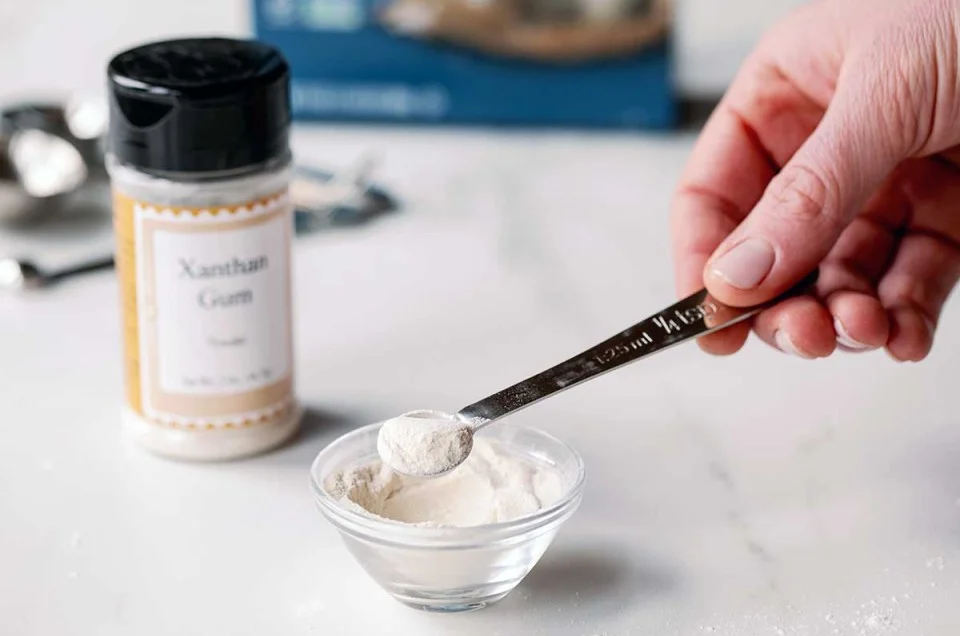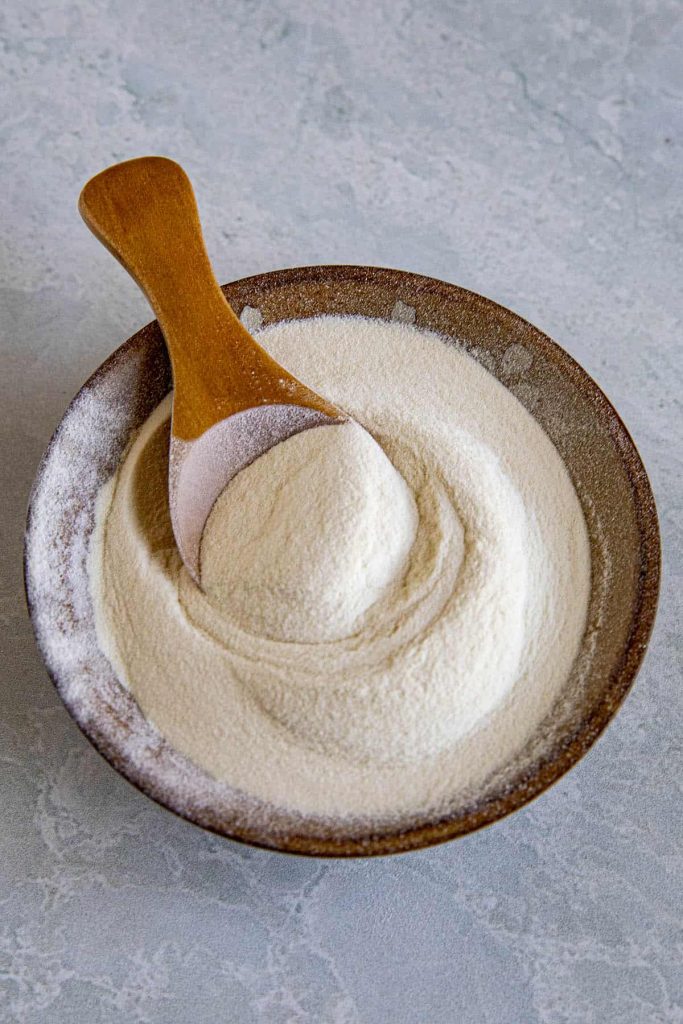Xanthan gum may sound like something from a science lab, but it’s actually a powerful and versatile ingredient used by home cooks and professional chefs alike. In this article, I will instruct you how to use Xanthan Gum in cooking properly and how to avoid common mistakes.
1. What is Xanthan Gum?
Xanthan gum is a food-grade powder made by fermenting sugar with a specific type of bacteria (Xanthomonas campestris). The result is a fine white powder that acts as a thickener, stabilizer, and binding agent in both hot and cold foods.
You’ll find it in many commercial products like salad dressings, ice creams, sauces, and gluten-free baked goods. But it’s also available at grocery stores and health food shops for home cooking.
2. When to Use Xanthan Gum
Xanthan gum is extremely versatile. Some of its most common uses in cooking include:
-
Thickening soups, sauces, smoothies, and gravies
-
Stabilizing emulsions like vinaigrettes and creamy dressings
-
Binding ingredients together in gluten-free baking
-
Improving texture in low-carb or keto-friendly recipes
Because it works in hot and cold environments and requires no cooking to activate, xanthan gum is a go-to for modern cooks looking to improve texture and consistency without altering flavor.

3. How to Use Xanthan Gum Properly
3.1. In Liquids
When using xanthan gum in liquids, the key is to avoid clumping and use it sparingly. Here’s how to use it in specific dishes:
3.1.1. In Soup
Xanthan gum is excellent for thickening soups without adding flour or cornstarch.
How to use:
-
Start with 1/8 teaspoon per cup of soup.
-
Sprinkle it evenly while blending or whisking vigorously.
-
Let it sit for a minute to thicken — it works quickly.
This is especially useful for low-carb or gluten-free soups, where you want a creamy consistency without the carbs.
3.1.2. In Sauce
Xanthan gum creates silky, smooth sauces and gravies that won’t separate.
How to use:
-
Mix xanthan gum with a small amount of oil or dry ingredients (like spices or sugar) to prevent clumping.
-
Use around 0.1% to 0.3% of the total weight (around 1/8 tsp per cup).
-
Blend or whisk into the sauce until fully dissolved.
It thickens almost instantly and doesn’t require heating.
3.2. In Baking
In gluten-free baking, xanthan gum replaces the stretch and elasticity that gluten provides. It helps trap air and moisture, giving baked goods a better rise and texture.
How to use:
-
Cakes & muffins: Use 1/2 teaspoon per cup of gluten-free flour.
-
Bread & pizza dough: Use up to 1 teaspoon per cup of flour for stronger structure.
Make sure it’s evenly mixed with the dry ingredients before adding wet ones for best results.
3.3. In Cookies
Cookies benefit from xanthan gum’s binding properties, especially in gluten-free or egg-free recipes. It helps hold the dough together and prevents crumbling after baking.
How to use:
-
Add about 1/4 to 1/2 teaspoon per cup of flour.
-
Combine with dry ingredients before mixing dough.
-
Be careful not to overdo it — too much can make cookies chewy or rubbery.

4. Common Mistakes to Avoid When Using Xanthan Gum
| ❌ Mistake | ⚠️ Why It’s a Problem |
|---|---|
| Adding it directly to liquids | Causes clumping and uneven thickening |
| Using too much | Can create slimy, gummy, or rubbery textures |
| Substituting it 1:1 for flour or cornstarch | It’s much more concentrated — use sparingly |
| Not blending thoroughly | Leads to lumps and inconsistent texture |
Tip: Always blend xanthan gum into your recipe thoroughly, and when possible, use a blender or immersion blender for smooth results.
5. Frequently Asked Questions (FAQs)
Q: Can I cook xanthan gum?
A: You can, but you don’t need to. It works without heat and thickens both hot and cold liquids.
Q: Is xanthan gum safe?
A: Yes — it’s approved by the FDA and widely used in food production. However, those with sensitive digestive systems may want to use it in moderation.
Q: Is xanthan gum keto or paleo?
A: It’s low in carbs and commonly used in keto recipes. Paleo acceptance varies — some strict versions exclude it because it’s a processed product.
Q: Can I substitute it with guar gum or psyllium husk?
A: Yes, in some recipes. Guar gum works well in cold dishes, while psyllium husk is great for baking but may alter taste and texture slightly.
Xanthan gum is a powerful, easy-to-use ingredient that can elevate your cooking and baking — especially if you’re working with gluten-free, low-carb, or modernist recipes. From thickening soups and sauces to creating soft, chewy cookies, it offers unmatched versatility.
Just remember: a little goes a long way, blend it well, and follow best practices to avoid common mistakes. With the right approach, xanthan gum can be one of the most valuable ingredients in your kitchen.
